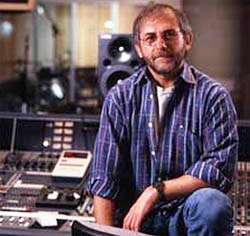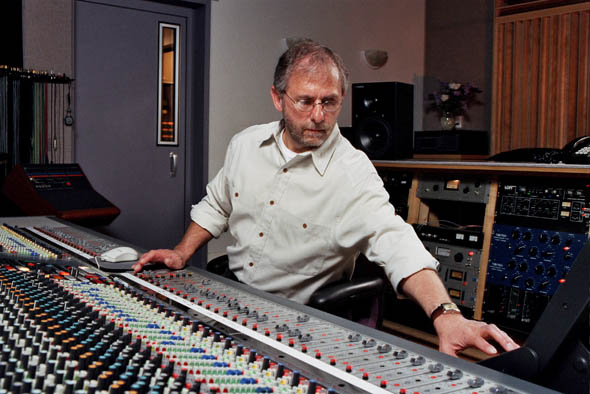
Where do you usually start your mix from?
Elliot: Out of force of habit, if there’s a rhythm section I’ll usually start with the drums and then move to the bass and just work it up. Once the rhythm section is set I’ll move on to everything else and end with vocals.
How much EQ do you use?
Elliot: I can’t say that there are any rules for that. I can’t say that I’ve ever mixed anything that Al has recorded, but if I did I probably wouldn’t have any on it. With some of the stuff done by some of the younger kids, I get it and go, “What were they listening to when they recorded this.”
So in some cases I use drastic amounts where I’ll be double compressing and double EQing; all kinds of stuff in order to get something to sound good. I never did that until maybe the last 5 years. Obviously those mixes are the ones that take a day or more.
When you’re setting up a mix, do you always have a certain set of outboard gear, like a couple of reverbs and delays, ready to use or do you patch it as you go?
Elliot: Usually I don’t start out with any reverbs. I’m not one for processing. I’d like to believe that music can survive without reverbs and without delays and without effects. Obviously when it’s called for I’ll use it, but the stuff I do is pretty dry. The 70’s were a pretty dry time and then the 80’s effects became overused. There was just tons of reverb on everything.
Most of your Steely Dan stuff is pretty dry, isn’t it?
Elliot: It’s pretty much dry. What we used were plates usually.
Real short ones?
Elliot: Not necessarily. In the days when I was working at A&R [studios in New York city] we had no remotes on any of our plates there. Phil [Ramone – producer and owner of A&R] wanted to make changing them difficult because he tuned them himself and he really didn’t want anybody to screw with them.
There would be at least 4 plates in every room. Some of them might be a little shorter than another but generally they were in the 2 to 2 1/2 second area. There was always an analog tape pre-delay, usually at 15 ips, going into the plates. The plates were tuned so brilliantly that it didn’t become a noticeable effect. It was just a part of the instrument or part of the music. You could actually have a fair amount on an instrument and you just wouldn’t notice it.
Is the sound of the A&R plates something that you try to get today?
Elliot: Oh, I’m always trying to get that reverb sound If I’m using plates either at Right Track or Capital, I’ll still use an analog tape delay going into it.
For more of this interview, check out The Mixing Engineer’s Handbook
Bobby Owsinski is an author, producer, music industry veteran and technical consultant who has written numerous books covering all aspects of audio recording. For more information be sure to check out his website and blog.

